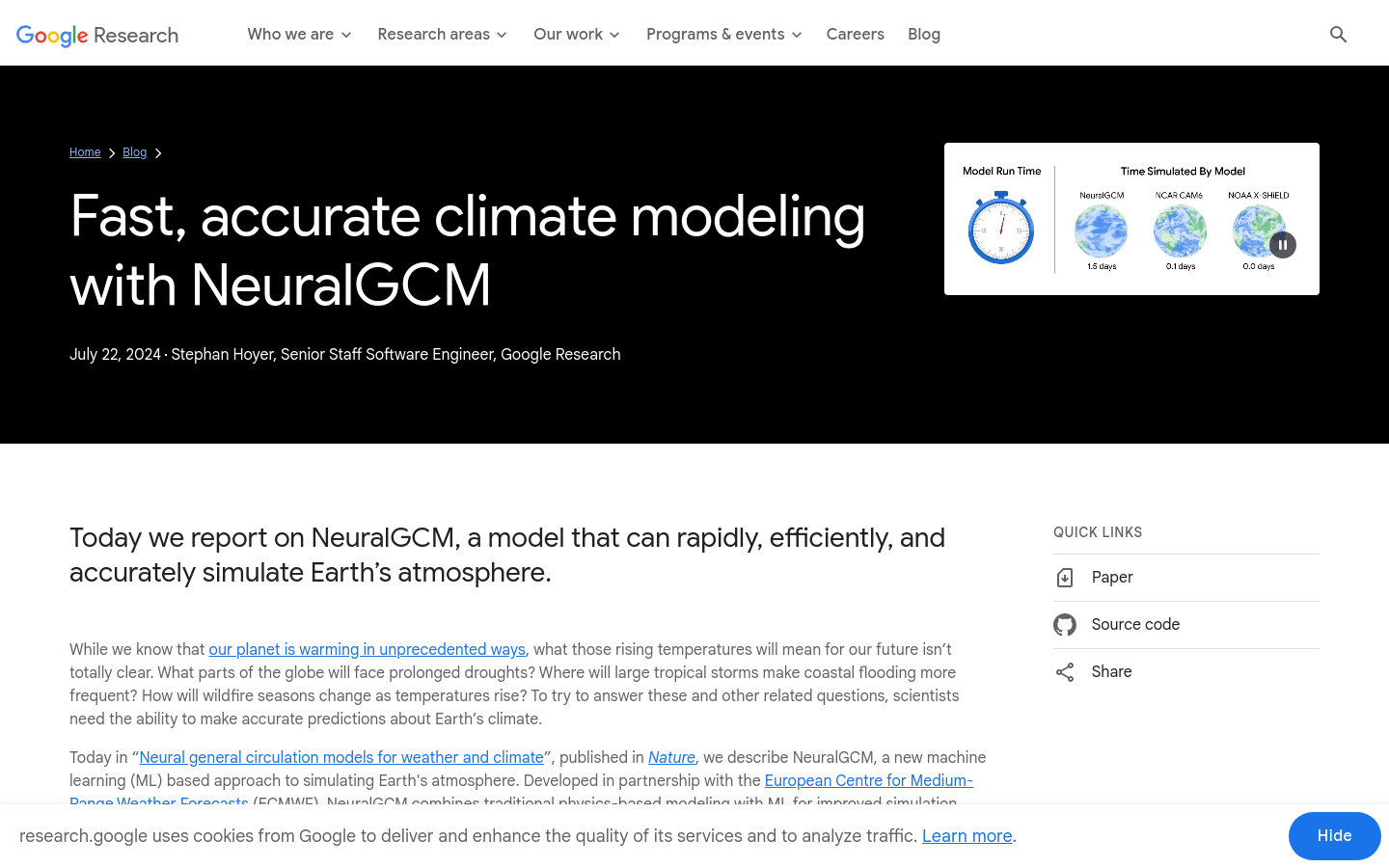

Neuralgcm
Overview :
NeuralGCM is a climate model developed by the Google research team that integrates machine learning techniques to enhance simulation accuracy and efficiency compared to traditional physics-based models. NeuralGCM can generate weather forecasts for 2 to 15 days, surpassing the accuracy of current gold-standard physical models, and reproducing temperature data from the last 40 years more accurately than conventional atmospheric models. While NeuralGCM has not yet been fully developed into a complete climate model, it represents a significant step towards creating more robust and user-friendly climate models.
Target Users :
The primary audience for NeuralGCM consists of climate scientists and researchers who require accurate climate predictions to understand the impacts of climate change on various regions worldwide, such as variations in drought, tropical storms, and wildfire seasons. Additionally, due to its efficiency, NeuralGCM is also suitable for policymakers and planners who need rapid climate simulation results.
Use Cases
Climate scientists use NeuralGCM to forecast climate change trends in specific regions for the coming decades.
Government agencies utilize NeuralGCM's predictive results to formulate policies and plans for responding to extreme weather events.
Educational and research institutions use NeuralGCM as a teaching tool to help students understand the complexities of climate systems.
Features
Combines traditional physical models with machine learning to enhance simulation accuracy and efficiency.
Generates high-precision weather forecasts for 2-15 days.
Reproduces temperature data from the past 40 years with accuracy exceeding that of traditional models.
Utilizes neural networks to learn the physical characteristics of small-scale events from existing meteorological data.
Rewrites numerical solvers in JAX for gradient-based optimal adjustments.
Operates efficiently on TPUs and GPUs, offering performance advantages over traditional models primarily running on CPUs.
Provides open-source code and model weights for non-commercial use and further research development.
How to Use
Step 1: Visit the NeuralGCM GitHub page to download the source code and model weights.
Step 2: Install the necessary dependencies and runtime environment as instructed in the documentation.
Step 3: Run the NeuralGCM model by inputting the required meteorological dataset.
Step 4: Configure model parameters, such as resolution and the time range for simulation.
Step 5: Initiate the simulation process and wait for the model to generate predictive results.
Step 6: Analyze the predictive results and adjust model parameters as needed to optimize accuracy.
Step 7: Apply the predictive results to climate research or decision-making.
Featured AI Tools

Gemini
Gemini is the latest generation of AI system developed by Google DeepMind. It excels in multimodal reasoning, enabling seamless interaction between text, images, videos, audio, and code. Gemini surpasses previous models in language understanding, reasoning, mathematics, programming, and other fields, becoming one of the most powerful AI systems to date. It comes in three different scales to meet various needs from edge computing to cloud computing. Gemini can be widely applied in creative design, writing assistance, question answering, code generation, and more.
AI Model
11.4M
Chinese Picks

Liblibai
LiblibAI is a leading Chinese AI creative platform offering powerful AI creative tools to help creators bring their imagination to life. The platform provides a vast library of free AI creative models, allowing users to search and utilize these models for image, text, and audio creations. Users can also train their own AI models on the platform. Focused on the diverse needs of creators, LiblibAI is committed to creating inclusive conditions and serving the creative industry, ensuring that everyone can enjoy the joy of creation.
AI Model
6.9M













